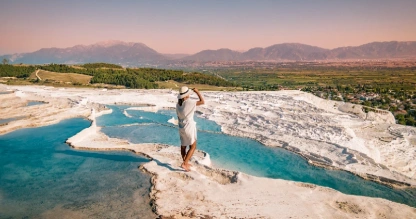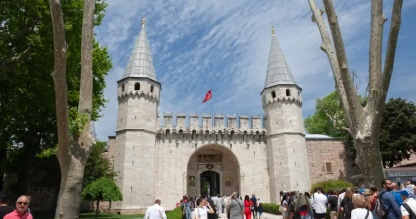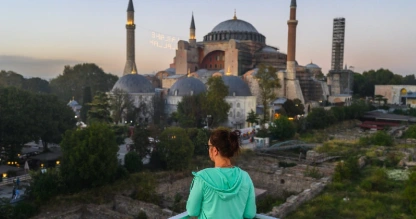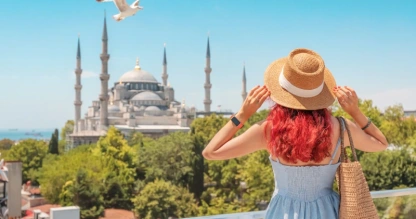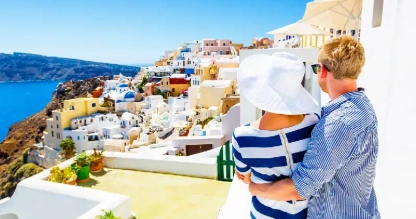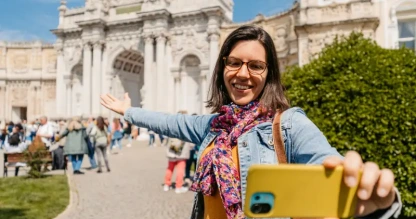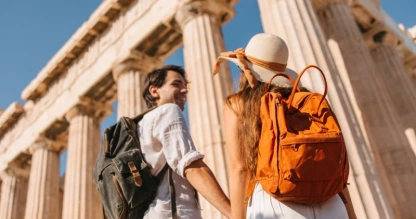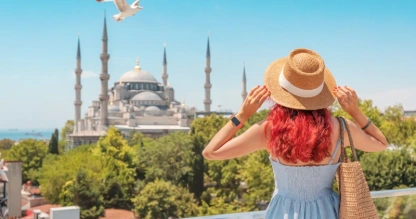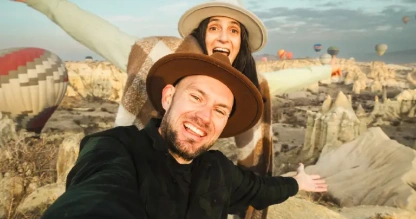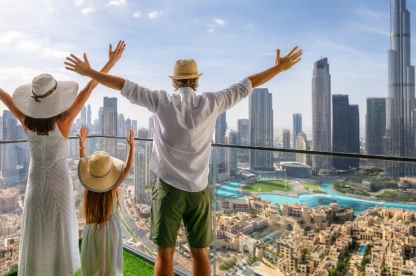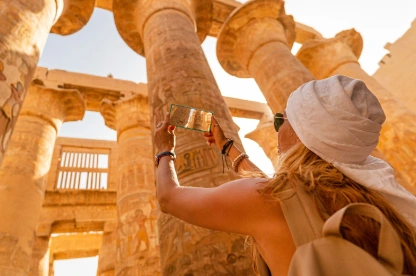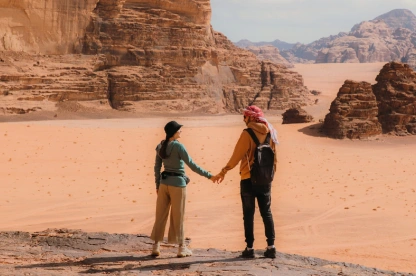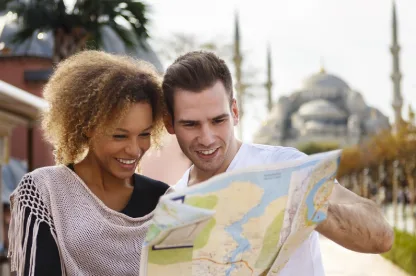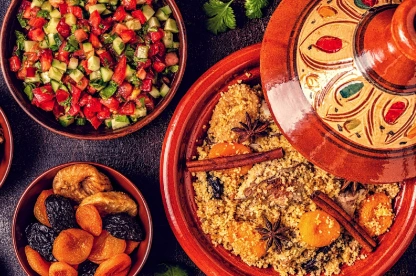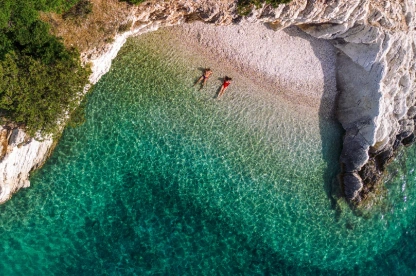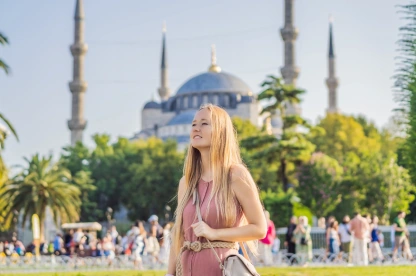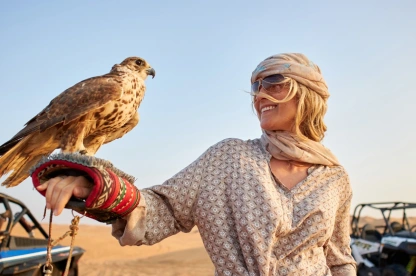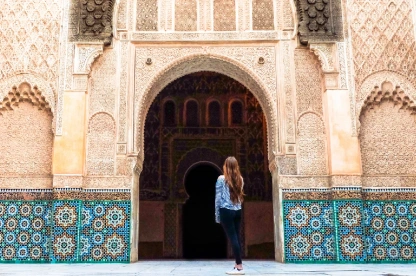Table of Contents:
Turkish Culture: History, Food & Life
Turkish culture combines Eastern and Western influences into a mixture of traditions spanning centuries. The country's position between two continents allows it to draw elements from both East and West, creating its own distinctive cultural identity. Several locations with substantial cultural heritage have earned UNESCO World Heritage status, including Istanbul's historic areas, Hattusha's ancient Hittite capital, and Troy's archeological site.
Turkish culture has evolved considerably while preserving its traditional and historical values. Kemalism emphasized Turkish culture and drove modernization after the republic's establishment. Turkish culture and traditions showcase remarkable hospitality and generosity. People share generously not just with friends but with everyone they meet. Turkish society reflects both its various local cultures and one national identity in regional cuisine and distinctive art forms.
The Roots of Turkish Culture
Turkish history dates thousands of years, with roots in Anatolian territory that are deep. The heritage has been established over centuries of influences that modern Turkish identity derives from.
Influence of Ancient Civilizations: Byzantine, Roman, Ottoman, Seljuk
Turkey's culture is dominated by the powerful empires that used to rule the land. The Romans left behind monumental architecture and urban planning, still visible today in the ancient cities like Ephesus. The Byzantines left a Christian and artistic legacy, most famously represented by the Hagia Sophia.
The Seljuks, a Central Asian Turkic state, left Islamic art, intricate tile work, and caravanserais that provided service to traders on the Silk Road. Finally, the Ottoman Empire, which ruled for over 600 years, layered Turkish culture with Islamic traditions, stunning architecture (including the Blue Mosque and Topkapı Palace), and a blend of Balkan, Arab, and Persian influences that still echo in modern Turkish music, cuisine, and life.
Importance of Geography: Being a Bridge between Asia and Europe
Turkey's location at the crossroads of Europe and Asia has made it a natural cultural and economic bridge between the two continents for centuries. The country, spanning two continents, is a blend of Eastern tradition and modern western lifestyle.
Its cities, like Istanbul, which sprawls over two continents, reflect this blend in every sense, from the architecture to cuisine. Its position also made it a natural stopover on old trade routes, including the Silk Road, providing a constant influx of goods, people, and ideas.

Turkish Traditions and Daily Life
Turkish daily life is centered on robust social relationships and centuries-old traditions that bring people and communities together.
Family structure and values
Family is the backbone of Turkish life. It is the origin of emotional support, financial help, and social connection. Three generations of a rural family often live together under the same roof, but urban areas now have smaller families with two children on average. Even if they do not live together, the members of the extended family are close and visit each other regularly as a shared responsibility.
Age plays an important role in family culture and relationships. Elders command respect and authority. Kids learn not to disagree with older family members openly. They do not smoke or argue in front of elders and are more formally polite to them.
Greeting customs and etiquette
People greet others in various ways based on their gender, relationship, and setting. A handshake is appropriate for a first meeting, but some Muslims do not want to touch the opposite sex. Family and friends exchange one or two cheek kisses. People greet older people respectfully with a special gesture - they kiss the older person's right hand and touch it to their forehead.
Hospitality is the core of Turkish etiquette. The hosts present tea or coffee as soon as guests arrive. Refusing these offerings might be rude. Guests are required to take off their shoes when entering a house. Turks repeat invitations because genuine offers are made more than once. It's polite to refuse initially then accept.

Major life events
The most important life events in Turkey are solemn ceremonies that strengthen community ties. Wedding customs take place in stages. The groom's family visits the bride's home to ask for marriage. They bring flowers and chocolates with them, and the bride serves Turkish coffee. Along with that, the night before the wedding includes "Henna Night" celebrations with folk music and henna applied to the bride's hands.
Young males celebrate their coming of age through circumcision celebrations. They dress in the clothes of small sultans and receive gifts in the form of gold coins. Another important tradition is military service. Send-off parties with food and music are given by family and friends.

Art and Architecture
Turkey's cultural heritage reflects its multi-cultural past and reflects centuries of diverse influences and state-of-the-art creativity. Turkish art developed distinct styles as it adapted to new cultural trends in the last few years.
Miniature and Ottoman visual arts
Ottoman miniatures developed as a unique art that documented history with great precision and not priority given to esthetics. Ottoman works differed from Persian miniatures because they valued factual accuracy in depicting military expeditions, ceremonies, and court life. These paintings displayed multiple points of view in a single image and often showed both inside and outside of buildings at the same time.
The art peaked during the 16th century when Sultan Suleiman's long reign brought extensive patronage of arts and architecture. The tradition emphasized documentation over individual artistic expression, so most miniature painters' names remain unknown.
Seljuk and Ottoman architectural styles
Seljuk architecture in Anatolia featured intricate tilework, geometric patterns, and monumental portals. The Great Mosque of Divriği exemplifies these characteristics. Ottoman architecture grew from these foundations and developed a classical style that the legendary architect Mimar Sinan perfected.
His masterpieces—the Şehzade Mosque, Süleymaniye Mosque, and Selimiye Mosque—show Ottoman's achievement in unifying various architectural elements into harmonious wholes with impressive domes at their center, , which you can admire on your Turkey tour. Ottoman religious buildings typically formed larger complexes (külliyes) that included madrasas, hammams, and markets.
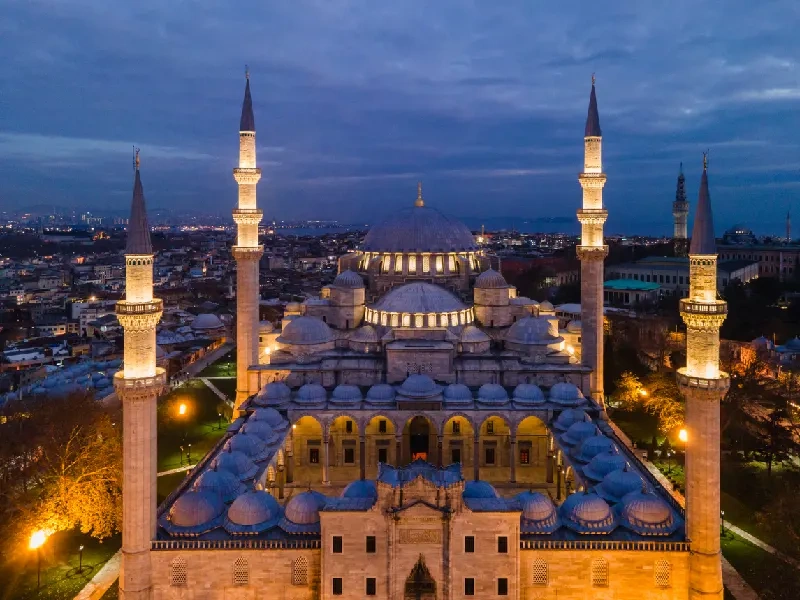
Turkish calligraphy, miniatures, and carpet weaving
The Ottomans adopted calligraphy from Arabic traditions and turned ordinary documents into artistic masterpieces. Carpet weaving represents one of Turkey's oldest artistic traditions and dates back to prehistoric times.
Girls were taught weaving as part of their education and they displayed creativity in geometric designs and symbolic motifs. These intricately handcrafted carpets were utilized for various purposes, from wedding ceremonies to tombs.
Modern Turkish architecture and design
Modern Turkish architecture creates a balance between cultural heritage and state-of-the-art design. Geometry and pattern-based approaches have influenced modern design since the 1950s. Architects like Celal Gokhan Avcioglu and Emre Aralot create sustainable structures while preserving traditional esthetics.
Turkey's architectural ambitions on the global stage shine through landmark buildings like Istanbul Airport (designed by Grimshaw) and the renovated Atatürk Cultural Center.
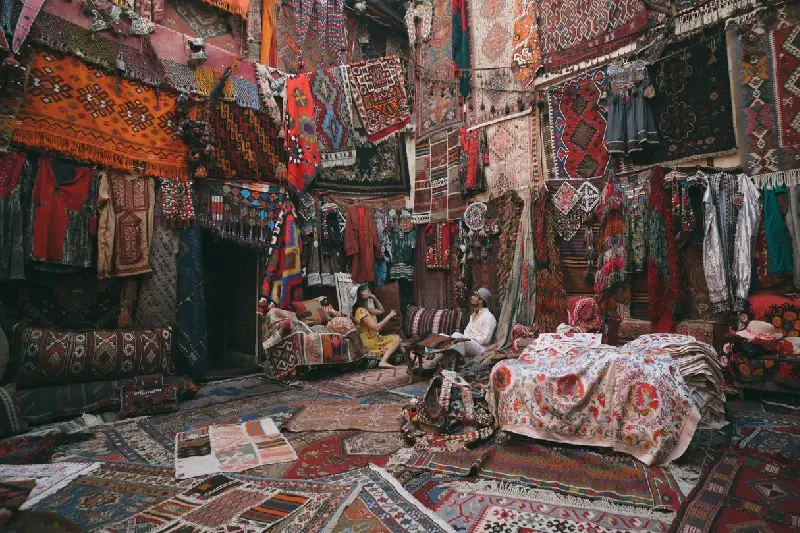
Cuisine and Culinary Traditions
Turkish cuisine is one of the richest and most varied cuisines globally. Its geographical location between two continents has shaped its amazing food culture that reflects centuries of cultural exchange and creativity.
Regional food diversity across Turkey
Each of Turkey's seven regions boasts a variety of unique dishes. On the Aegean shore, food is made with olive oil and fresh vegetables. The Black Sea region's food revolves around fish, especially anchovy (hamsi). Exotic kebabs and mezes are prepared wonderfully in the southeastern part of Turkey. Also Keşkek and Mantı are in Central Anatolia.
Popular dishes: kebabs, meze, and baklava
Kebabs are Turkey's most famous food export, with names like döner, shish, iskender, and adana. Turkish cuisine is not at all just grilled meat, though. Meze culture of small dishes before meals shows how much Turkish people love sharing food. These include hummus, grape leaves stuffed with rice, and other yogurt-based dips.
Baklava takes center stage on the dessert menu - its layers of filo pastry stuffed with pistachios or walnuts and honey syrup. It was perfected by Ottoman cooks over the centuries.

Street food and modern Turkish cuisine
Street food is part of the fabric of Turkish cuisine. People love simit (sesame-covered bread rings), balık ekmek (fish sandwiches), and börek (filled pastries). New Turkish chefs are re-interpreting traditional dishes with creative ways and presentations. Turkish cuisine has come to the world stage.
Festivals and Music
Turkey's cultural heritage is uncovered in its festivals and music which bring society together in celebration and creativity. It hosts over 1,000 festivals per year, testifying to its rich culture and creative nature.
Religious and national celebrations
Turkish festivities are of two types: religious and national celebrations. Religious festivals are lunar-based and change around 11 days earlier each year. The three-day Sugar Festival (Şeker Bayramı) marks the end of Ramadan (Ramazan). People make house calls to kin, give each other gifts, and have sweets for guests during this time. Children welcome their elders by kissing their hands and are rewarded with money or gifts.
The four-day Feast of Sacrifice (Kurban Bayramı) is observed to honor Prophet Abraham's sacrificial dedication to his son. The ceremony entails animal sacrifice, and people share the meat among their relatives and those in need.
National days mark significant events in Turkish history. Republic Day (Cumhuriyet Bayramı) on 29th October marks the founding of the Republic of Turkey in 1923.
National Sovereignty and Children's Day (April 23), Commemoration of Atatürk, Youth and Sports Day (19th May), and Victory Day (30th August) are celebrated by the nation as well. The national holidays entail official ceremonies, military parades, and open-air rallies which uphold national unity.
Spring also has its traditional celebrations. Hıdırellez in early May welcomes spring with people singing folk songs, traditional fire-leaping rituals, and communal feasts.
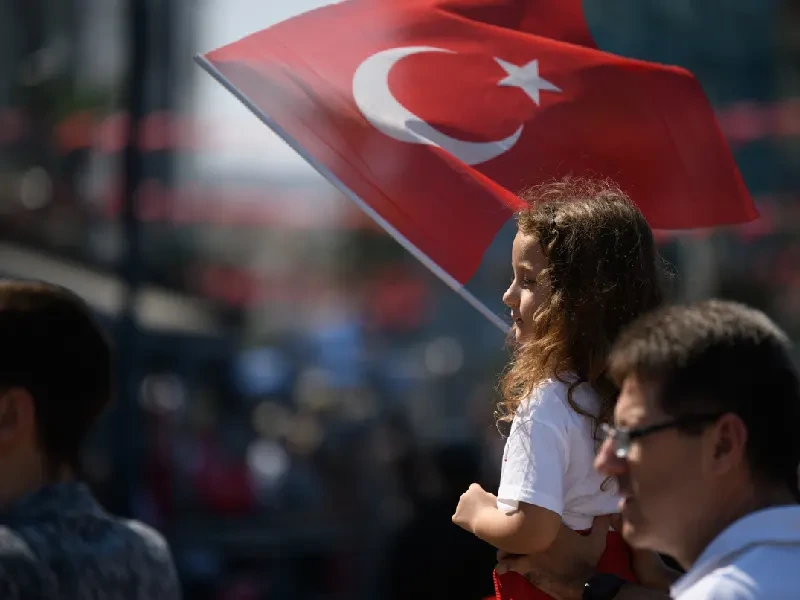
Folk music and modern popular culture
Turkish music has developed but preserved its unique flavor. Folk music (Türkü) tells tales of true events and legends on some events like weddings, funerals, and festivals. Two types of folk musicians contribute to this tradition: Türkü singers who sing for the locals and borrow melodies and lyrics, and Âsik (minstrels or bards) who develop their own flavor based on their life experiences and travels.
Istanbul reigns supreme over Turkey's music scene and hosts various international festivals each summer. The Akbank International Jazz Festival bridges cultures between Turkish artists and foreign jazz musicians. Modern Turkish music blends traditional with contemporary sounds. Currently, saz orchestras merge traditional instruments with arabesque melodies, carrying popular contemporary folk songs across Turkey.
Frequently Asked Questions
Q1. What is the main culture of Turkey?
Turkey’s main culture is a unique blend of Eastern and Western influences, rooted in Islamic traditions, Ottoman heritage, and modern secular values. It reflects a rich history shaped by diverse civilizations like the Byzantines, Romans, and Seljuks.
Q2. What are the manners of Turkish culture?
Turkish people are known for their warmth and hospitality. Greeting elders with respect, removing shoes when entering homes, and offering tea to guests are common social customs. Politeness and generosity are highly valued.
Q3. What is traditional Turkish food?
Traditional Turkish food includes dishes like kebabs, dolma (stuffed vegetables), börek (savory pastry), and lentil soup. Meals often end with sweet treats like baklava or Turkish delight, and of course, strong Turkish tea or coffee.
Q4. What is the famous festival in Turkey?
One of the most famous festivals is Republic Day on October 29th, celebrating the founding of modern Turkey. Another widely celebrated event is Ramazan Bayramı (Eid al-Fitr), marking the end of Ramadan with family gatherings and sweets.
Q5. What kind of art is popular in Turkey?
Traditional Turkish arts include calligraphy, ceramic tilework, carpet weaving, and miniature painting. Today, modern Turkish artists also thrive in painting, sculpture, and cinema, blending cultural heritage with contemporary expression.
Explore the richness of Turkish culture on our Turkey tours!
Find Other Blogs
Explore the 10 best things to do in Dubai, from world-famous sights and thrilling adventures to unique cultural experiences for every type of traveler.
Explore the best destinations in Middle East, from ancient wonders to modern marvels, perfect for culture lovers, adventure seekers, and beach fans alike.
Explore the timeless wonders of Egypt, from ancient pyramids to majestic temples, in this ultimate guide to the country’s most iconic sites.
Explore the magic of Wadi Rum, Jordan’s desert gem filled with red sands, towering cliffs, and unforgettable Bedouin adventures.
Get ready for your trip with these essential Turkey travel tips, covering culture, food, key sights, and must-know advice for first-time visitors!
Discover the rich flavors of Moroccan cuisine: tajines, couscous, street bites, and sweet treats you won't want to miss!
Discover the best beaches in Greece, from hidden gems to iconic shores, on unforgettable Greece tours filled with sun, sea, and stories.
Discover the most visited places in Istanbul, including top sites, historic landmarks, and must-see spots in this vibrant city.
Experience the thrill of a Dubai desert safari with dune bashing, camel rides and sunset views in one unforgettable adventure.
Explore the imperial cities of Morocco, Fez, Marrakesh, Rabat, and Meknes and experience rich history, culture, and stunning architecture.


